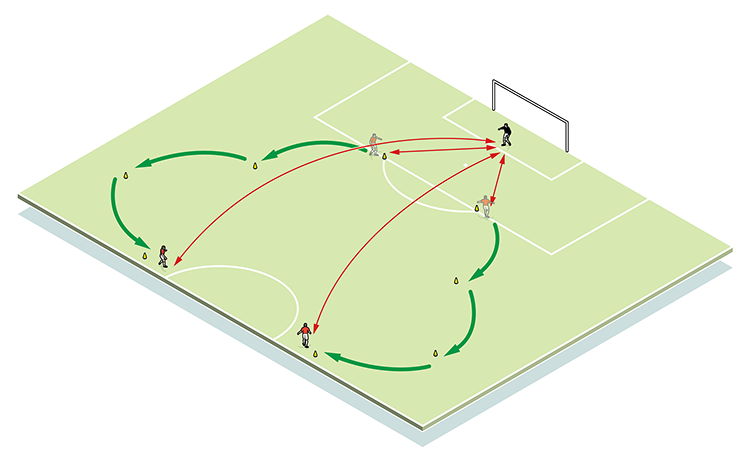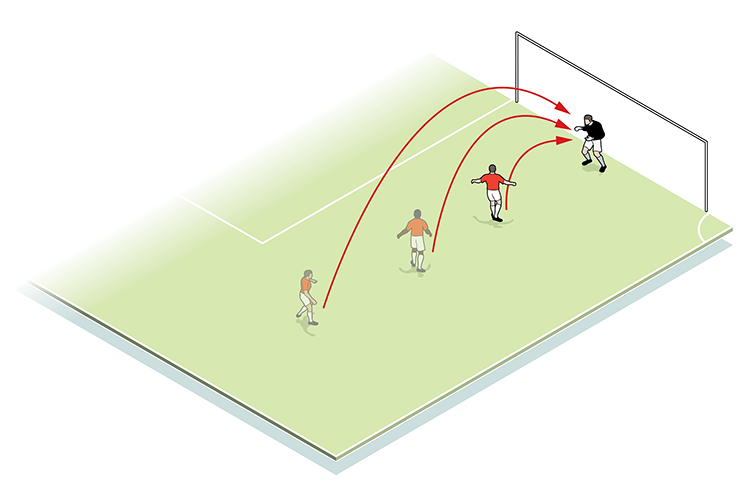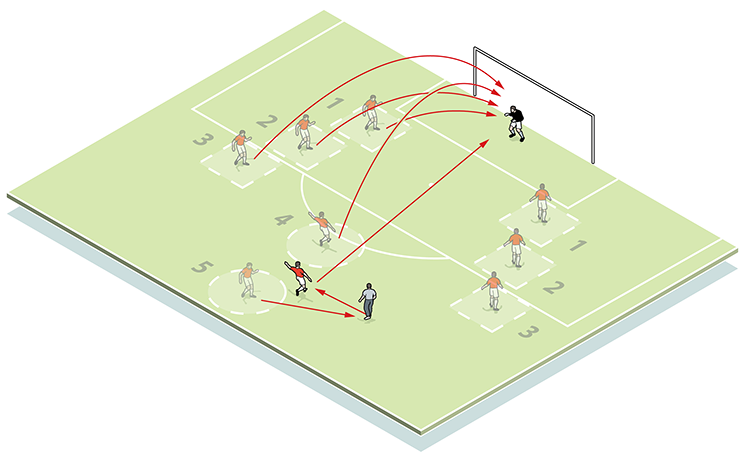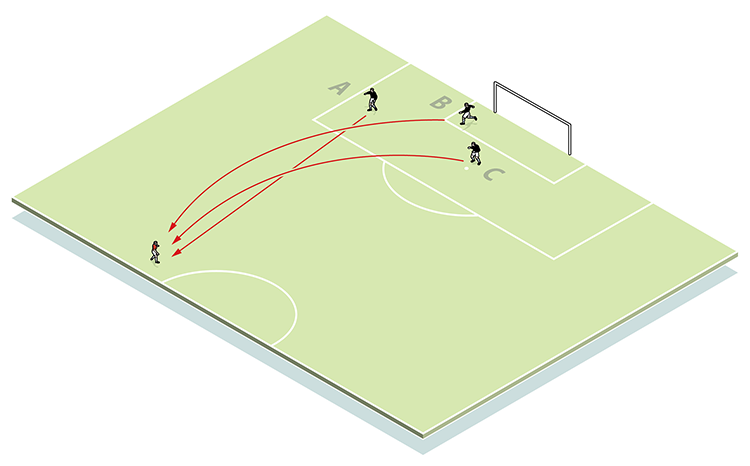You are viewing 1 of your 1 free articles
Keeper match day warm-up
| Area | Half pitch |
| Equipment | Balls, cones, goals |
| No. of Players | Up to 4 |
| Session Time | 90mins |
This session is designed to assist goalkeeping coaches and keepers, at all levels.
It uses a keeper, a sub keeper and a goalkeeping coach.
The warm-up on match day is the culmination of the previous few days on the training ground and in the classroom, getting ready to cross the white line and deliver a performance both for the individual and the team.
I have always based the warm-up procedure as a 90-minute session, preparing for a 90-minute game. It involves technical, tactical, physical and mental components, and while the detail for Edwin Van Der Sar’s warm-up was very different to Peter Schmeichel’s, the theory and practice in preparation was the same.
This is all about being right mentally and tactically. Keepers must be confident in their technique – after all, their first task might be to receive a bouncing back pass!
Pre-match routine
90 minutes to kick-off
Keepers study information on the opposition strikers – all aspects such as structure of set pieces, and which foot outfield players favour. They do this using iPads and iPods.
The team meeting follows, with consultation between the outfield and goalkeeping coaches regarding defending and attacking set pieces.
60 minutes to kick-off
Individual physical preparation begins – this includes bike work, stretching, light massage and applying strapping.
45 minutes to kick-off
The goalkeeping team enters the field of play for a five-minute dynamic warm-up (1a). The working keeper practises distribution and passing. Four target areas are involved, as shown by the cones, so the keeper can increase and decrease passing range – from grounded passes to nearby targets and kicks ‘out of hands’ to distant targets. Ball familiarity and confidence is important here.
There is also a practice to the side of the penalty area – dipping volleys into the keeper’s chest (1b). These comprise six volleys from 8, 12 and 20 yards respectively. We want to see keepers demonstrating good foot movement, and enjoying the feel-good factor of stopping a succession of shots.
1a

1b

40 minutes to kick-off
We fire six varying crosses (both inswinging and outswinging) from each side into the area in front of the goal (2). The sub keeper moves across the working keeper with a passive challenge. The types of crosses will reflect those we expect to see in the game itself. We look for an aggressive stating position by the keeper, who goes late and quick, always catching or punching.
2

30 minutes to kick-off
We mark out designated areas in front of the goal (3) – different areas require different deliveries – looking again for confidence, focus and good technique, as well as the awareness of changing angles and distances. Each keeper completes one set from each side.
3

Area 1: four volleys
Area 2: four half volleys
Area 3: two dipping volleys
Area 4: four dipping volleys from different starting positions
Area 5: touch and hit using sub keeper and goalkeeping coach
20 minutes to kick-off
Keeper 1 performs distribution work with the coach (4a), while keeper 2 works with outfield players on the side goal in a shooting practice (4b).
4a

A: three dead balls
B: four back passes with both feet
C: four balls kicked ‘out of the hands’
4b

15 minutes to kick-off
Keepers return to the dressing room for final preparations.
Related Files
Editor's Picks
Intensive boxes drill with goals
Penetrating the final third
Creating and finishing
My philosophy
Pressing initiation
Compact team movement
Defensive organisation
Back three tactics
Counter-pressing as an offensive weapon
Coaches' Testimonials

Alan Pardew

Arsène Wenger

Brendan Rodgers

Carlos Carvalhal

José Mourinho

Jürgen Klopp

Pep Guardiola

Roy Hodgson

Sir Alex Ferguson

Steven Gerrard
Coaches' Testimonials

Gerald Kearney, Downtown Las Vegas Soccer Club

Paul Butler, Florida, USA

Rick Shields, Springboro, USA

Tony Green, Pierrefonds Titans, Quebec, Canada
Join the world's leading coaches and managers and discover for yourself one of the best kept secrets in coaching. No other training tool on the planet is written or read by the calibre of names you’ll find in Elite Soccer.
In a recent survey 92% of subscribers said Elite Soccer makes them more confident, 89% said it makes them a more effective coach and 91% said it makes them more inspired.
Get Monthly Inspiration
All the latest techniques and approaches
Since 2010 Elite Soccer has given subscribers exclusive insight into the training ground practices of the world’s best coaches. Published in partnership with the League Managers Association we have unparalleled access to the leading lights in the English leagues, as well as a host of international managers.
Elite Soccer exclusively features sessions written by the coaches themselves. There are no observed sessions and no sessions “in the style of”, just first-hand advice delivered direct to you from the coach.








